After two years that saw cinema hit its lowest point in my lifetime, 2022 was a strong comeback. I’ve seen lots of people bemoaning the lack of good movies this year and I would argue there were plenty – you just had to put in a little effort to find them.
This is why my annual tradition of writing a top ten list remains so important to me. In a time when it’s more difficult than ever to decide what to watch, top ten lists serve as a helpful guide to point people in the direction of noteworthy films they may have missed during the year. Beyond that, crafting a top ten list is a personal statement, a subjective exercise that reveals parts of who you are and what you seek out as a filmgoer.
So in that spirit, consider this list my humble contribution to processing the moviegoing experience in 2022.
10. The Whale (Darren Aronofsky)
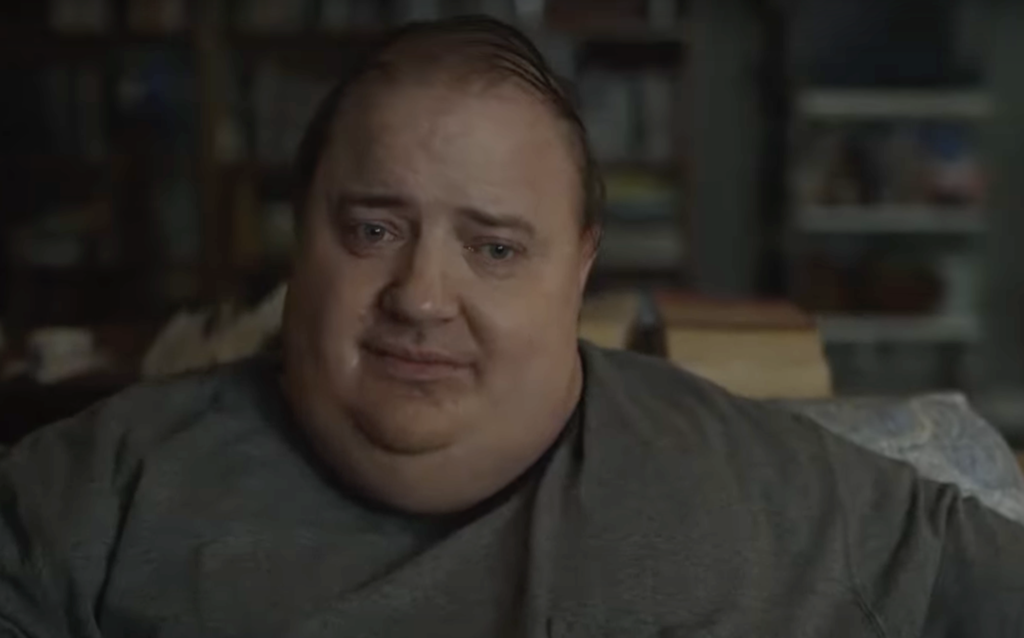
Easily the biggest tear-jerker of 2022, The Whale is a somewhat shallow and one-note film – but it’s also a morbidly compelling and emotionally moving watch that’s designed to function as a test of the audience’s empathy. The story centers on Charlie (Brendan Fraser), a man who is so morbidly obese that he can’t even stand up and move around without assistance. He stays isolated in his dingy apartment, teaching college writing courses online while lying that his camera is broken in order to keep his appearance hidden from the students.
Charlie has been binge-eating himself to death since the loss of his partner, a man he loved so much that he left his own wife and young daughter to be with him. His only friend is Liz (Hong Chau), a nurse who cares deeply for Charlie to the point that she can’t decide whether to yell at him or comfort him. When Charlie’s blood pressure rises to a level that signals imminent death, he attempts to reconcile with the daughter he abandoned (Sadie Sink) before it’s too late.
Those are the broad strokes of the plot, but Samuel D. Hunter’s script (adapted from his own stage play) does a good job of slowly layering details to fill in the spaces of these characters’ lives – even if some of the connections and conversations between them feel overly theatrical and contrived. Darren Aronofsky’s direction is unusually subtle and restrained by his lofty standards, but no less effective. In a nearly two-hour movie that all takes place in one apartment with just five characters appearing, he maximizes the claustrophobic atmosphere without ever letting the momentum of the film stall.
Brendan Fraser delivers by far the best performance of his career, a devastating tour-de-force that most people probably didn’t think he had in him (I’ll admit that I certainly didn’t). Buried under layers of prosthetics, he never loses sight of the character’s humanity, sometimes carrying entire scenes with just his eyes and facial expressions. Without a doubt, he deserves to win an Oscar for this role. Hong Chau and Sadie Sink are also excellent as the two most important people in Charlie’s life.
Aronofsky is possibly my favorite filmmaker and while this is far from his best work, he’s delivered yet another memorable experience with The Whale. The magic trick of this movie is that it portrays a character so outwardly repulsive, your natural instinct is to turn away – but by forcing you to spend time with that character and see life through his eyes, the beauty of the person underneath is gradually revealed.
9. Men (Alex Garland)
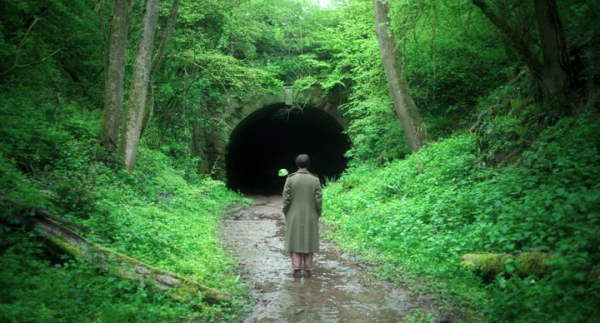
Alex Garland’s Men was one of the more divisive movies this year, turning many viewers off with its inflammatory subject matter and head-scratching conclusion. Count me among the film’s limited admirers – though the script is frustratingly obtuse at times, the technical craftsmanship on display is impeccable and I was riveted from beginning to end.
Jessie Buckley is terrific as Harper, a young woman who carries deep scars from a previous relationship with a mentally ill man that ended with him committing suicide right in front of her. In an attempt to get out of her own head, Harper retreats to an isolated rental home in the English countryside, but soon finds herself being stalked by a variety of creepy men who all seem to be subtly gaslighting her. Harper is the only woman around, surrounded by men who all want something from her – so who’s going to believe her when she says she’s in danger?
In a brilliant touch, Rory Kinnear plays all of the men stalking Harper. At one point, his face is even superimposed over a child’s body to unnerving effect. He does an excellent job imbuing all the different characters with distinct personalities, ensuring that each role stands on its own. The outstanding performances from Kinnear and Buckley, along with the striking cinematography and haunting score, are enough to make the film worthwhile on their own.
Though the script does an admirable job of exploring interesting questions and themes, the ending of this movie is baffling, to say the least. I left the film confused and a little frustrated by its conclusion. Yet, at the same time, I continued to think about Men long after it was over and certain images from the film have remained lodged in my brain. To me, that’s the sign of a successful movie, even if I wish it ended on a stronger note.
8. The Menu (Mark Mylod)
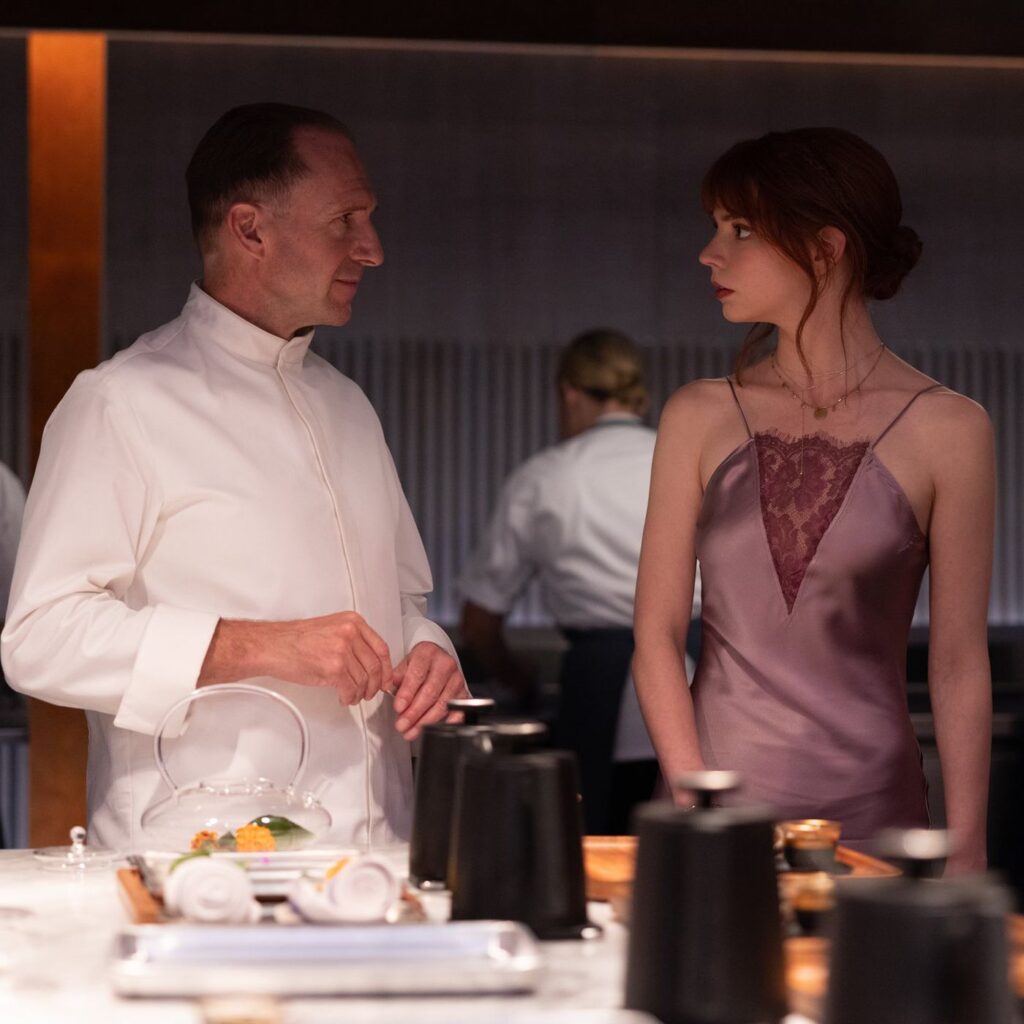
I didn’t expect to enjoy this movie nearly as much as I did. The Menu is yet another in a long line of recent films that skewer the wealthy and I couldn’t help but worry that it would be too safe and predictable, content to coast on easy jokes about the uber-rich without offering memorable characters or genuine suspense. I was wrong, as The Menu is one of the most sharply-written and purely entertaining movies I saw last year.
The film makes the most of a simple setup, stranding a bunch of pretentious elites on an exclusive dining cruise where the renowned chef (Ralph Fiennes) has decided that he’s had enough of serving these soulless bores. But a wrinkle is thrown into his meticulous plan by the unexpected presence of Margot (Anya Taylor-Joy), a mysterious passenger who doesn’t seem to fit in with the rest of the guest list. What starts as a social satire gradually evolves into a thriller, though the movie’s primary weapon remains humor from beginning to end.
Fiennes’ performance is nothing short of outstanding, turning a role that could’ve been a laughable caricature into an unforgettable villain who toes the line between hilarious and chilling. Taylor-Joy is the perfect counterpart, strong and feisty enough to stand up to the chef, but also vulnerable and relatable enough to make the audience root for her.
It’s true that the commentary on wealth and privilege is mostly surface-level stuff that we’ve heard before, but that’s okay – the main goal of this movie isn’t to make a thoughtful political statement. Instead, The Menu accomplishes the arguably even more difficult goal of injecting relevant, provocative commentary into a fun, crowd-pleasing thriller, offering a little bit of something for everyone.
7. The Sadness (Rob Jabbaz)
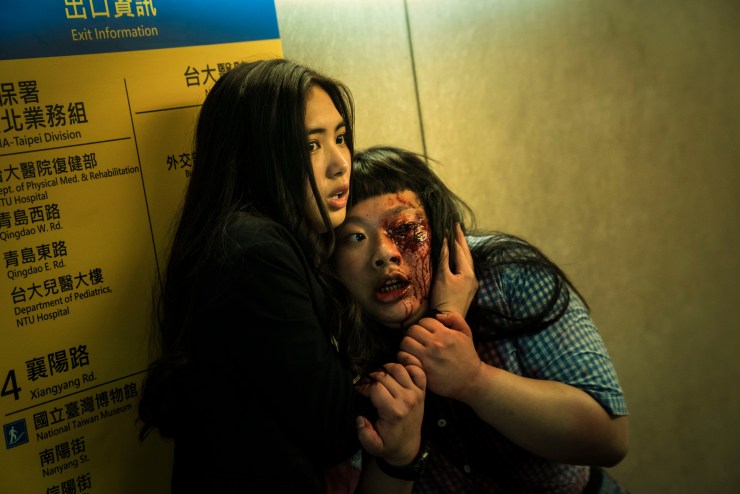
One of the most shockingly brutal, unrelentingly intense, and downright sickening horror films I’ve ever seen, it would be an understatement to say that The Sadness is not an easy watch. Set in Taiwan, the story focuses on the sudden emergence of a new virus that causes the scientific community to sound the alarm, while the government does nothing and the general population fails to take it seriously. Early in the film, characters shrug off ominous news reports, insisting that the virus is a hoax or part of some large conspiracy theory.
Obviously, this subject matter feels all too relevant, no matter what part of the world you’re living in. But unlike COVID-19, the virus in this movie doesn’t make people sick or die – it shuts down the part of their brain that governs aggression with reason, leading those who get it to lose all traces of decency and self-control. They essentially become feral animals, raping, killing, and mutilating any victims unfortunate enough to cross their path.
As the virus spreads, the city turns into a full-on battlefield, with nowhere safe to hide. In the midst of this chaos, two lovers desperately try to survive and make their way to one another before it’s too late. It’s a simple but effective premise, with the script offering just enough development to make us care about the main characters and feel invested in their survival. But after a quick setup, it’s nothing but balls-to-the-wall mania, keeping you pinned to the edge of your seat all the way through the gut-wrenching climax.
Please be advised, this movie is not for the faint of heart. The gore is jaw-droppingly graphic at times, while the scenes of cruel sexual violence and abuse will offend or upset many viewers. But if you’re like me and find most modern horror films to be too safe and predictable, this is the batshit crazy bloodfest you’ve been waiting for.
6. X and Pearl (Ti West)
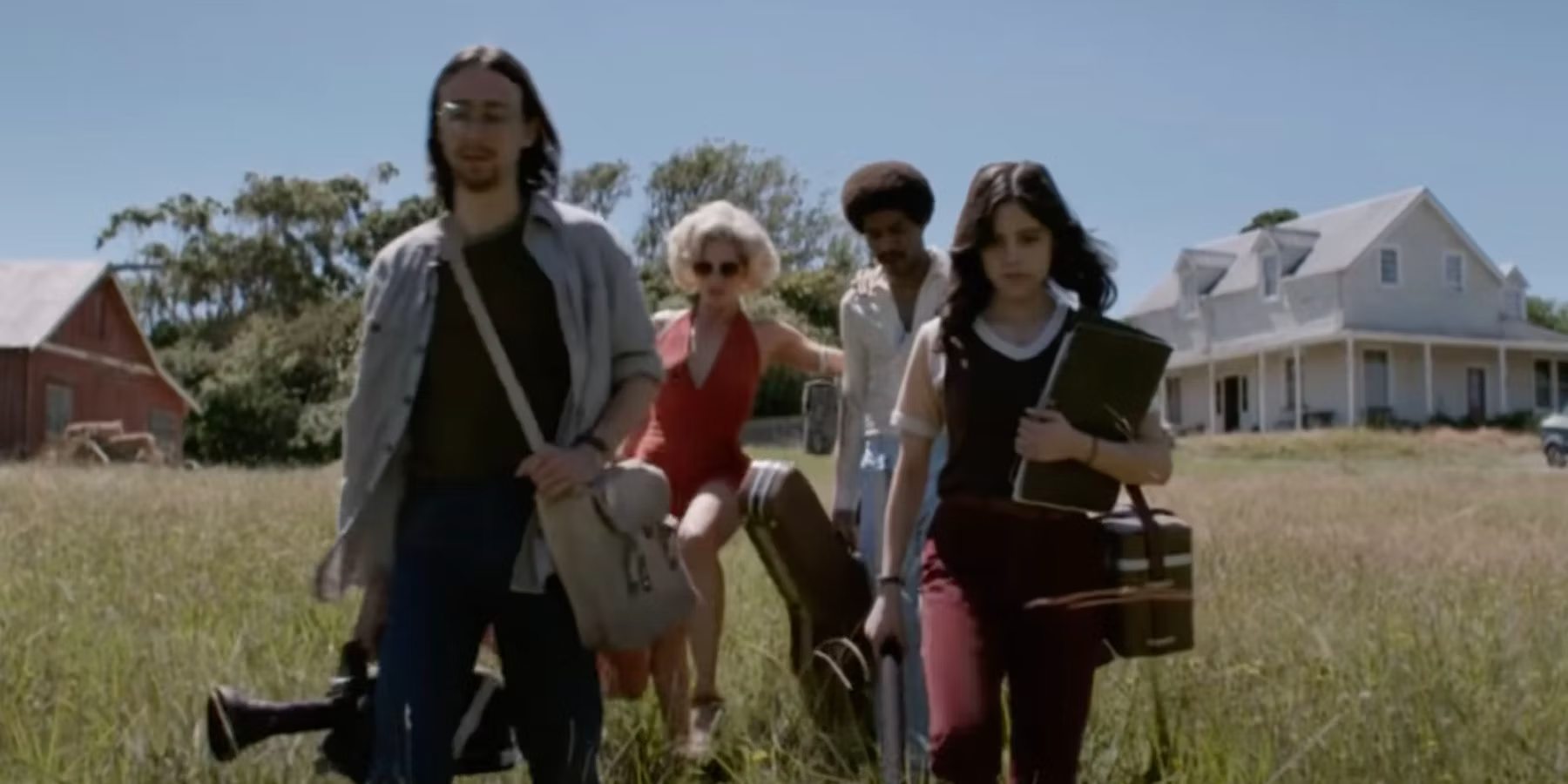
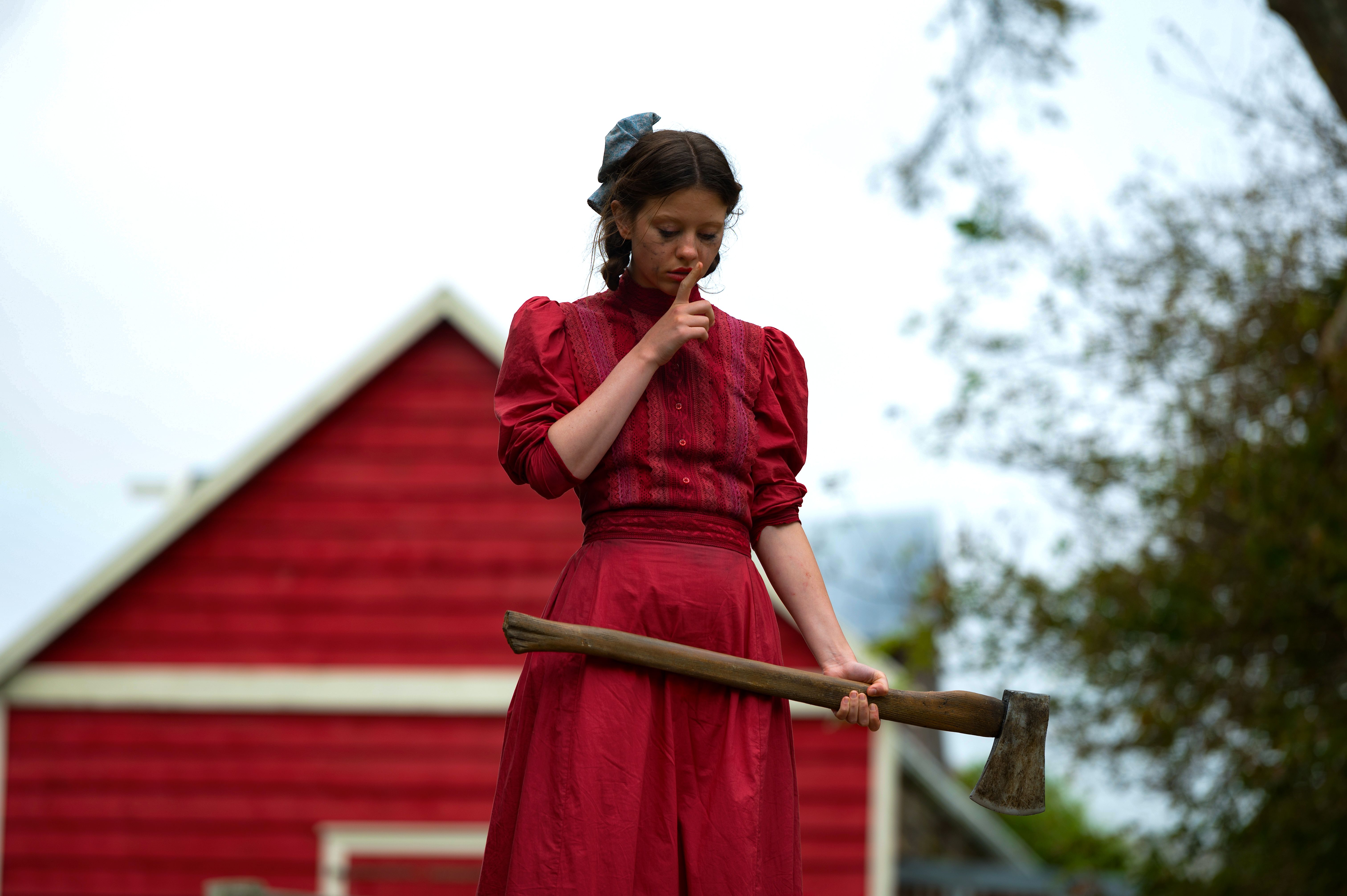
I know I’m cheating a bit by having two films share one spot, but the viewing experiences of X and Pearl are so inextricably linked to one another that it feels impossible to evaluate them separately. Filming and releasing two wildly different but thematically connected horror films back to back in the same year, writer/director/editor Ti West took a big swing that ended up paying dividends.
Set in 1979, X is a loving homage to 70’s grindhouse exploitation cinema, especially Tobe Hooper’s masterpiece The Texas Chain Saw Massacre. It follows a group of ambitious young people who set out to make a porn movie, planning to film it secretly in an isolated barn on the property of an old couple who have no idea what their guests are up to. Naturally, their hidden agenda is discovered by Pearl (the elderly woman), and to say that complications ensue from there would be an understatement. West takes his time getting to the climax, building tension slowly and methodically before finally letting things explode in a symphony of carefully choreographed bloodshed.
A massive departure from its predecessor, Pearl backtracks all the way to 1918, showing us how a beautiful young woman with dreams of stardom devolved into the sad, decrepit killer we meet in X. By showing us how Pearl is smothered and denied happiness, living on an isolated farm with her cruel mother and infirm father while her husband fights in World War 1, the film achieves a very rare thing – it makes us feel empathy for the villain.
Both films are stunning on a technical level, with the gorgeous cinematography and pitch-perfect costumes evoking their respective time periods flawlessly. X really looks and feels like a lost drive-in movie from the 1970s, while Pearl captures the dreamy aesthetic of old Technicolor classics like The Wizard of Oz.
But even more than the intoxicating style, what really sets these films apart is the star-making acting on display from Mia Goth. She pulls double-duty in X, playing cocky young porn star Maxine in addition to the elderly Pearl. Though she demonstrates a commanding screen presence in both roles, it’s her work as young Pearl in the sequel that you won’t be able to shake. Watching her mentally unravel in the climax, including an unbroken nine-minute monologue and a final close-up of her face that lingers through the credits, is absolutely riveting and deeply unsettling.
Taken on their own, these are both solid and memorable horror films that would each be worthy of inclusion on this list. But evaluated together, X and Pearl make for one hell of a double feature – once you’ve watched both, the experiences retroactively enrich and enhance one another, encouraging repeat viewings. West has already announced that he’s developing a third chapter of the story, MaXXXine – I’m not sure if it’s needed, but I know I’ll be at the theater opening night anyway.
5. Decision To Leave (Park Chan-Wook)

The latest work from legendary Korean director Park Chan-Wook, Decision To Leave is a surprisingly low-key film. The shocking violence of Oldboy and lusty eroticism of The Handmaiden are nowhere to be found here. Instead, the movie is a quiet and haunting love story, focusing on a homicide detective (Hae il Park) who becomes gradually drawn to a Chinese immigrant (Tang Wei) as he investigates the suspicious death of her husband.
Naturally, things quickly grow complicated, as our protagonist becomes torn between the legal obligations of his job and his increasingly strong feelings for this mysterious woman who may or may not be dangerous. The film is more of a slow-simmering romance than it is a murder mystery, but the script does contain some nice surprises that keep the viewer guessing as to the characters’ true intentions. It all culminates in a haunting conclusion that stuck with me long after the credits rolled.
Park and Wei give excellent performances as the film’s two leads, effectively conveying the loneliness and desperate sense of longing between their characters. The film also benefits from expert direction and some of the most striking imagery seen on screen this year. Though Decision to Leave isn’t Park Chan-Wook’s best work, it’s a beautifully-shot and well-written piece of classical storytelling, the kind of movie we see all too rarely these days.
4. Terrifier 2 (Damien Leone)
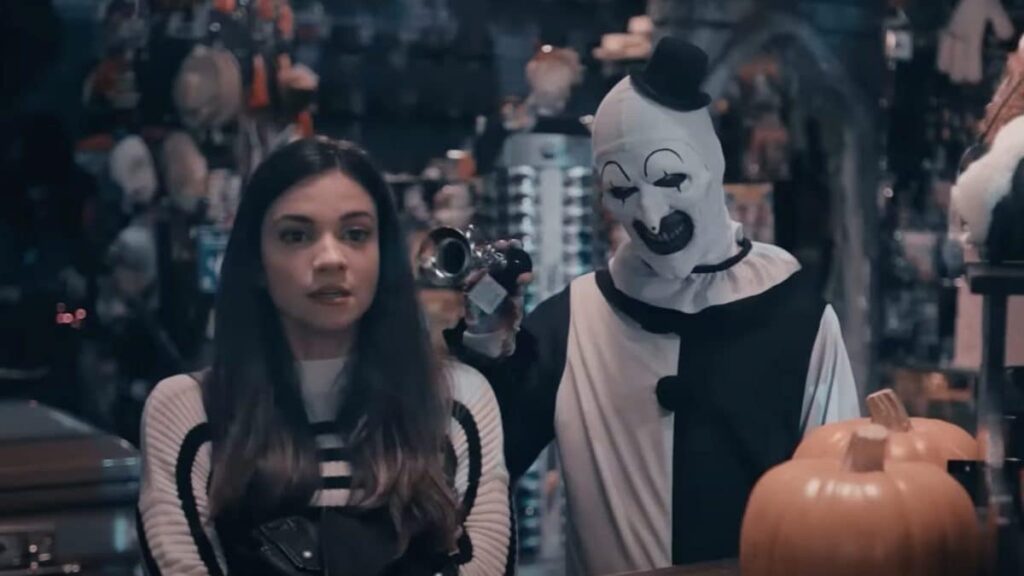
I thoroughly enjoyed 2016’s Terrifier, as well as the 2013 anthology film All Hallows Eve that first introduced audiences to Art the Clown. But nothing could’ve prepared me for the bloody mayhem that writer/director/practical effects master Damien Leone unleashes in Terrifier 2, the most ambitious, entertaining, and unforgettable slasher film I’ve seen in ages.
The first Terrifier was a lean and mean movie that served almost entirely as a showcase for Art the Clown and Leone’s knack for crafting stomach-churning kill scenes. In Terrifier 2, there’s an actual plot and lots of time is spent developing the protagonists so the audience feels genuinely invested in them. This is a refreshing change of pace from the usual slasher formula of focusing on dull, generic characters who the audience won’t miss when they’re inevitably slaughtered.
The story centers on Sienna Shaw (Lauren LaVera), a troubled teenager dealing with emotional issues in the wake of her father’s death. Meanwhile, her younger brother Jonathan (Elliot Fullam) seems a little too fascinated with the details of the massacre that took place in their small town a year ago, and the siblings’ overprotective mother (Sarah Voigt) struggles to hold their dysfunctional family together. Before long, their already-complicated lives unravel into a full-fledged nightmare as Art the Clown returns to Miles County and targets Sienna.
While many viewers will complain about the nearly two and a half hour runtime, the epic length allows Leone to fully flesh out his characters and slowly build an elaborate mythology around Art The Clown. The kill sequences are also thrillingly unrestrained, incorporating brilliant prosthetics and practical effects to achieve some of the most gruesomely gory moments ever shown on screen.
Yet despite all the brutality, Terrifier 2 never fails to be an absolute blast, incorporating plenty of dark humor and a heightened tone that’s rarely seen in modern horror. The epic climactic battle between Sienna and Art is so over-the-top that it feels like you’re watching a supremely messed up superhero movie and is worth the price of admission alone.
Lauren LaVera is terrific as Sienna, a final girl for the ages – I can’t remember the last time I fell in love with a new character/actress so immediately. And once again, David Howard Thornton is brilliant as Art the Clown, solidifying his character as a modern slasher icon who is both hilarious and terrifying, all without making a sound. They’re the perfect stars to bring Leone’s demented vision to life, a vision that feels comfortingly nostalgic and refreshingly new at the same time.
The blood-spattered mania of Terrifier 2 will only appeal to a limited audience, but for hardcore slasher fans, this film is an instant classic. Now, bring on Terrifier 3!
3. RRR (S.S. Rajamouli)
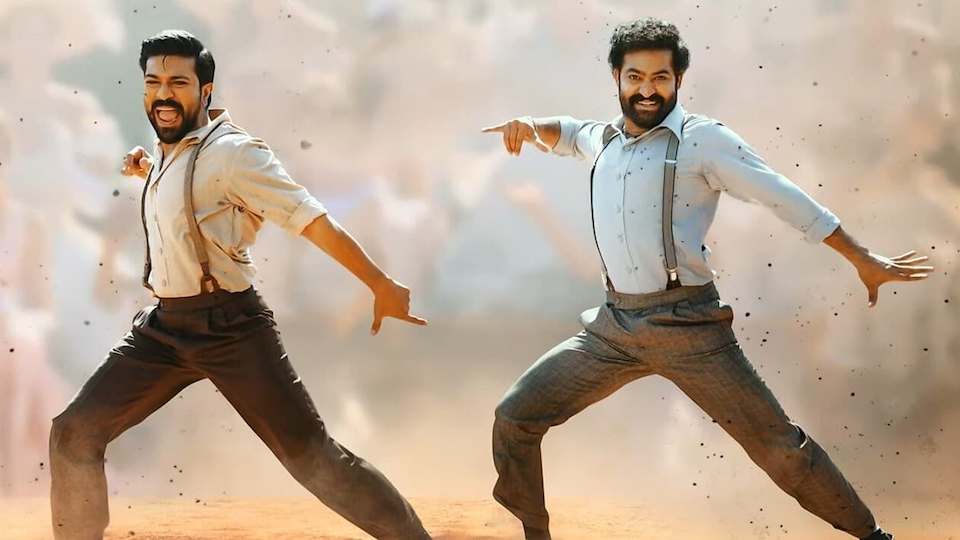
Move over, James Cameron. In a year that was filled with huge blockbuster spectacles, only one of them stuck with me, and it wasn’t the new Avatar. That honor belongs to S.S. Rajamouli’s RRR, a Telugu-language film from India that is truly epic in every sense of the word. Over the course of its three-hour runtime, RRR relentlessly jolts the audience with massive action setpieces and infectiously exuberant song-and-dance numbers, injected into a narrative that’s equal parts mythical fable, tender bromance, and rousing anti-colonialism statement.
If that sounds like a lot of movie, it is – in fact, what primarily makes RRR such a thrilling experience is the sheer largeness of it all. It arguably runs a bit longer than it needs to, but the film is never dull for even a moment. The action is thrilling, the acting is solid, and the story is filled with heart. This is the kind of movie that feels constantly in danger of tipping over the edge into parody, but the passion and sincerity of everyone involved somehow manages to hold it all together. As a bonus, the musical numbers are incredible and that’s coming from a person who typically loathes musicals.
More than just a movie, RRR is an experience, one that’s best enjoyed with a group so you can all laugh, dance, and cheer together. Is it absurdly over-the-top to the point of being cheesy at times? Absolutely, but that’s part of the charm. Rajamouli never makes the mistake of taking himself too seriously, ensuring that RRR is a blast from beginning to end. So round up your closest friends, find the biggest screen you can, and get ready to Rise, Roar, Revolt.
2. Everything Everywhere All At Once (Daniel Kwan & Daniel Scheinert)
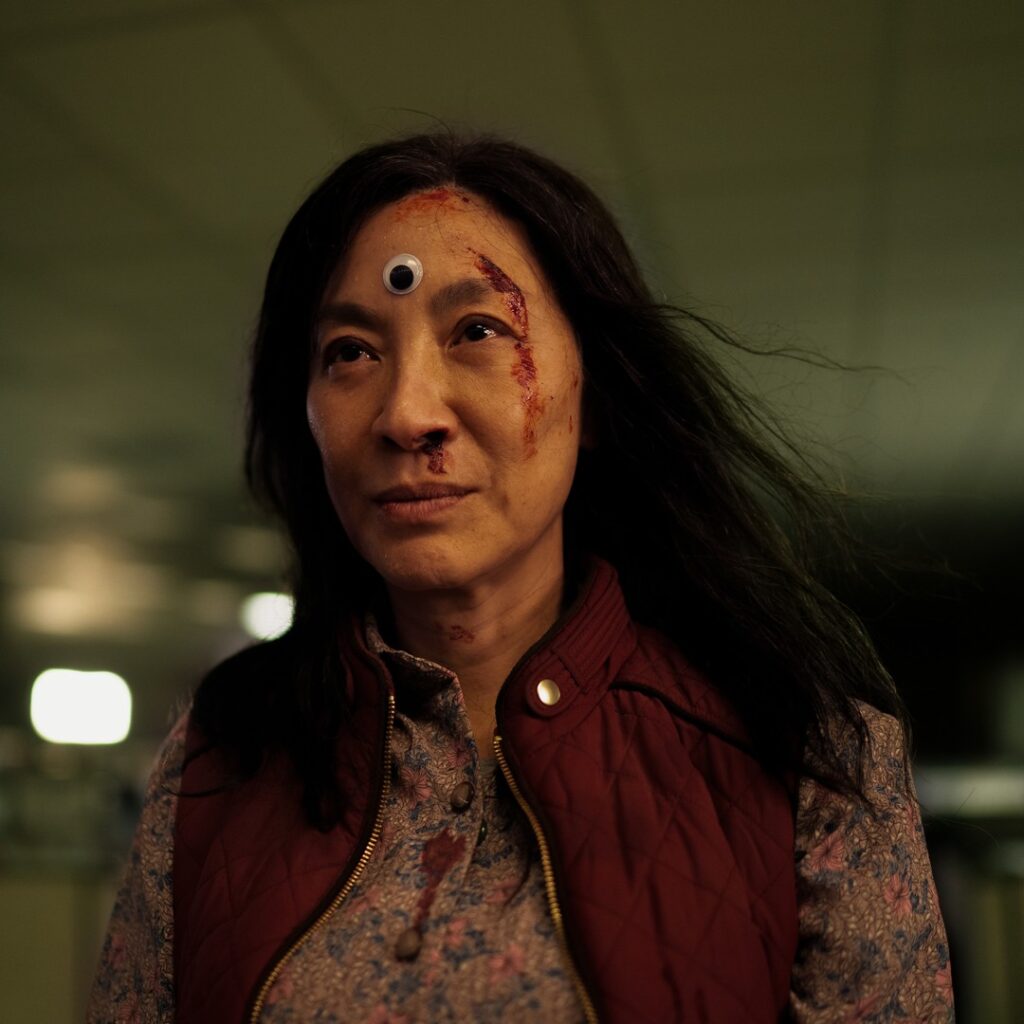
When I saw this movie in theaters all the way back in March, I knew that it would be tough to top. And while 2022 turned out to be a strong year with some excellent competition, my prediction that this film would remain at or near the top of my list proved correct. Rarely have I seen a movie that makes me laugh and cry in equal measure, but this mind-bendingly original creation from the Daniels (Daniel Kwan and Daniel Scheinert) manages to achieve exactly that.
The story focuses on Evelyn Wang (Michelle Yeoh), a Chinese immigrant who disappointed her father (James Hong) by marrying the sweet but bumbling Waymond (Ke Huy Quan) and moving to America. At the start of the film, Evelyn is trying to hold her struggling Laundromat business together in the midst of an IRS audit and organize a party for her visiting father. Meanwhile, her marriage with Waymond is falling apart and her relationship with her daughter Joy (Stephanie Hsu) is even worse.
In the midst of this stressful and chaotic time in her life, Evelyn finds herself sucked into an inter-dimensional battle that threatens the fate of every reality in the infinite multiverse. As a middle-aged woman who has achieved none of the goals she set for herself in life, Evelyn will have to harness every forgotten talent and unrealized ambition in her arsenal to become the best version of herself and save the world from irreversible destruction.
If you’re like me, that plot synopsis may leave you feeling skeptical. After all, haven’t we had more than enough of this multiverse stuff in recent years? Rest assured, you can brush any doubts aside as Everything Everywhere All At Once makes Marvel movies look like child’s play. The perfect blend of art and spectacle, this is the rare film that works both as an exhilarating roller coaster ride as well as an emotionally resonant, thought-provoking story with fully-fleshed out characters and relatable themes.
The cast is terrific from top to bottom, with Yeoh and Quan especially delivering award-worthy performances and Jamie Lee Curtis stealing every scene she’s in as a ruthless IRS agent. The film is also immaculate on a technical level, as everything from the costumes to the production design to the editing feels carefully considered and masterfully executed. The script is among the most original and entertaining of any film in recent memory, while Kwan and Scheinert’s direction somehow manages to hold all of this chaos together with not a moment feeling wasted or out of place.
There’s a lot more I could say about this film, but I don’t want to spoil any fun surprises. Just know that you’ve never seen anything quite like it in your life, even if you think you have based on the plot description. An absurdist comedy, an ambitious sci-fi spectacle, a martial arts action extravaganza, a tender saga of a broken family, and a poignant rumination on the meaning of existence – this wonderful movie somehow manages to be all of these things, all at once.
1. Bardo, False Chronicle of a Handful of Truths (Alejandro Gonzalez Iñárritu)
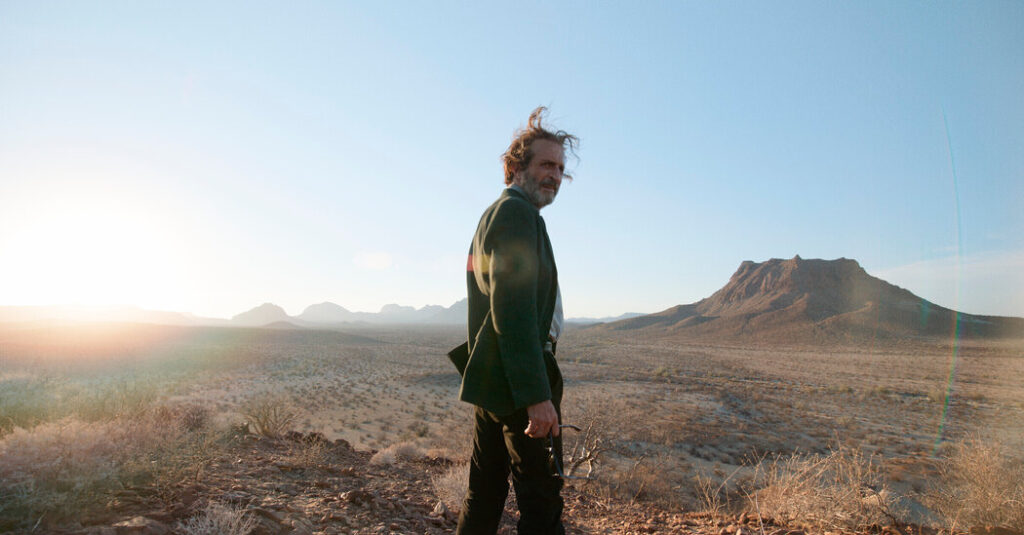
The latest film from Alejandro Gonzalez Iñárritu features, among other things, a man attempting to fly, a flood on a Los Angeles Metro car, a dramatic recreation of the Battle of Chapultepec, and a baby refusing to emerge from his mother’s womb because “the world is too fucked up” – and that’s all just in the first twenty minutes.
Sadly dismissed by most critics as overlong and pretentious, Bardo is a challenging and richly layered allegory of a film that finds its acclaimed director interrogating himself with unflinching honesty in an attempt to reckon with his own legacy. The plot rebels against any sort of traditional structure, transcending the chronology of time and even the laws of physics to recount the emotional odyssey of Silverio Gama (Daniel Giménez Cacho), a Mexican journalist turned documentary filmmaker who’s selected to receive a prestigious American journalism award in Los Angeles.
Silverio suffers from impostor syndrome and crippling self-doubt, the type of artist who strives to gain respect and recognition only to immediately withdraw the moment he receives it. Having left his native Mexico for the United States many years ago to escape artistic censorship, he’s now a man without a country – never accepted as a true American, yet at the same time “too gringo” to fit in with his friends and family back home. Often, he seems unsure whether to champion his home country for its rich culture or criticize it for its many shortcomings.
In this way, Silverio lacks a definitive identity, trapped between the conflicting narratives of how he sees himself and the person that everyone wants or imagines him to be. He’s the ultimate tortured artist, driven and possessed by the need to create, but unable to silence the nagging inner voice that tells him nothing he’s doing really matters. Cacho does a great job of bringing this conflicted protagonist to life, while Griselda Sicilliani, Ximena Lamadrid, and Iker Sanchez Solano all deliver strong supporting work as Silverio’s wife and children.
Iñárritu has demonstrated an exceptional command of craft throughout his illustrious filmography, but this may be his best work to date. If nothing else, Bardo is the most visually stunning film experience of 2022, every shot a masterful composition that deserves to be framed. The set design, sound work, editing, and music are all top-notch as well.
It’s hard to talk much about the plot of this movie without spoiling the journey, but despite what detractors may say, it does all make sense in the end – just don’t expect Iñárritu to spoon-feed you the meaning. If you’re looking for a simple, easy-to-digest narrative, Bardo is not the movie for you. But if you’re open to an unforgettable cinematic experience unlike anything you’ve seen before, this film will take hold of your imagination and never let go.
